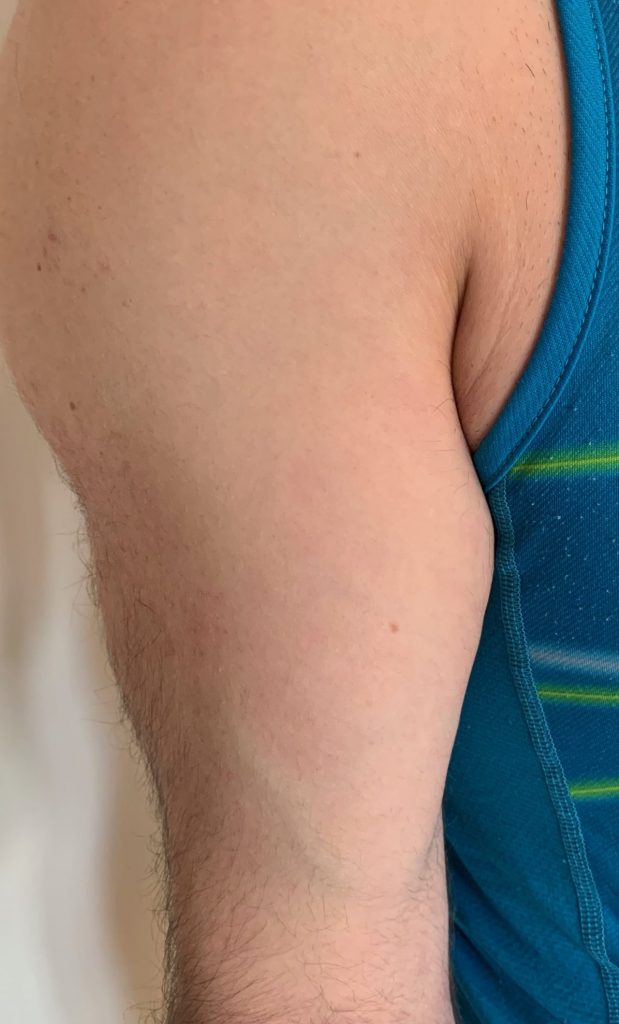Muscles move joints. A muscle arises from a bone on one side of a joint and inserts into a bone on the other side of the joint. Sometimes they cross two joints. Muscles usually attach to the bones via tendons.
In the case of the biceps of the arm, it attaches via two tendons to the scapular bone (shoulder blade). It is called the “biceps” as it arises from “two heads”. It passes across the shoulder and elbow joint and inserts into a large bump on one of the forearm bones, the radial tuberosity.
The biceps tendons can tear at either the upper or lower end. The commonest tear is of the “long head” of biceps which passes through the shoulder joint itself. The tendon commonly undergoes degeneration. Degeneration of the tendon (“tendinopathy”) makes it more prone to tearing or rupturing. Rupture of the tendon causes pain and bruising, but these symptoms resolve over weeks. The muscle adjusts over time and normally regains full power. However, a person may be left with a deformity called the “Pop Eye” sign. As the biceps tendon still has its other attachment intact, the muscle will recover its normal strength and function. Because these types of tears do not cause a functional problem they are not repaired, regardless of the age of the person.
Less frequently the tendon tears at its lower, called a distal biceps tear. This type of tear does cause problems. Both elbow bending and rotating the forearm become weak. This in turn may lead to difficulties with such activities as using a screwdriver, turning a doorknob or taking off the lid of a jar. Therefore, ruptures of the distal end are more problematic. For these reasons rupture of the distal end of the biceps is best repaired early.
Tears of the distal end of the biceps cause pain, weakness, and deformity of the biceps muscle. However, not uncommonly, these tears are missed or their significance is unrecognised. Treatment of delayed tears often requires tendon grafting. It is therefore a more complicated procedure, with a slower recovery.


